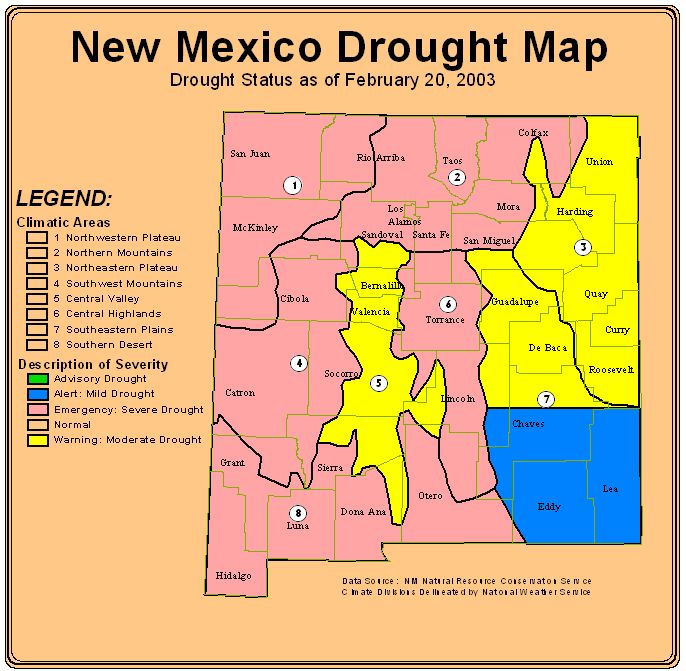
pink = emergency: severe drought
yellow = warning: moderate drought
blue = alert: mild drought
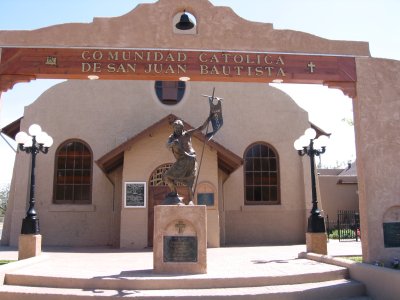
The Franciscan Order played a valuable role in the founding of the New World and also of the exploration of the southwest. Franciscan friars accompanied all of the important explorations of the southwest, including New Mexico and were involved with its settlement from the beginning.
The Franciscan Order also played an important role in Roswell. It founded two of its churches 100 years ago. St. John the Baptist Catholic Church and St. Peter Catholic Church celebrate their centennials in late April and early May, 2003.
In Seeds of Struggle, Harvest of Faith, a book on the history of the Catholic Church in New Mexico, edited by Thomas Steele, Paul Rhettes and Barbe Awalt, Roswell’s Josephine Gutierrez wrote a chapter about the Catholic history in Roswell and the Chaves County area.
With the establishment of Fort Stanton in Lincoln County in 1885, Hispanic colonists began to move into the Hondo Valley. Around 1866, a settlement was established by a group of Hispanics at the Missouri Plaza (La Plaza de San Jose de Missouri). This settlement, about 15 miles west of today’s Roswell, was the first recorded settlement in what is now Chaves County but it was short-lived. Comprised mostly of farmers, irrigation began drying up the lower Rio Hondo, and Missouri Plaza settlers moved away.
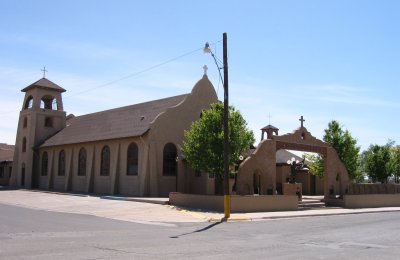
For a while after Roswell was founded in 1872 by Van Smith, who named the community for his father, the Catholic pastor from the parish in Lincoln also served Roswell and many other nearby communities. A comment in the Roswell Register for April 1, 1896 stated that Roswell would soon have a Catholic Church, and an article appeared in the November 28, 1902 Roswell Register titled Catholics May Erect Place of Worship. In part it read, “… received such substantial encouragement that is it probable that a church will be built and that a sanitarium may be established here under the care of the Sisters of Mercy.”
In Anselm Weber, O.F.M., Missionary to the Navajo by Robert L. Wilken, was written “… in 1903 the Cincinnati Franciscans accepted the missions of southern New Mexico … Three Franciscans were appointed to the Roswell-Carlsbad mission.” The piece goes on to say that Catholics visiting Roswell found “scarcely a handful of Anglos who were Catholic, though Chihuahuita and the Berrendoes area were heavily populated by poor Mexican immigrants. Because the Anglo-imposed segregation policy had already fixed the housing pattern, the missionaries unthinkingly fell in line and abetted the uneconomic and thoroughly un-Christian institution of racial segregation by founding two separate parishes, one for a dozen Anglos and the other to serve several hundred Mexican families.
“Father Herbert, the Roswell superior, took charge of the dozen Anglos, offering Mass in the flimsy, false-front bottling works, which looked like a state prop for a western movie. Father Eligius Kunkel built St. John the Baptist Church close to Chihuahuita, the Mexican quarter.”
The above information was from that chapter on the history of Catholic history in Roswell and Chaves County by Josephine Gutierrez. Among her sources of history information, she credits Freddie J. Romero and James D. Shinkle.
St. John’s was built north of the St. Peter’s church.
The beautiful St. John’s church has undergone considerable renovations. A recent addition is the parish’s external Centennial Memorial Wall, which lists the names of “about every parishioner who has died,” according to Father Juan Montoya. Listed are 3,500 deceased church members, spanning from the past 100 years. This will prove to be priceless to future genealogists.
St. John’s and St. Peter’s parishes were listed for Roswell in the 1904 Catholic Directory.
The coming of the two Catholic churches coincided with the arrival of St. Mary’s Hospital, founded by the order of the Sisters of the Sorrowful Mother. The St. Mary’s building was completed in 1906 and served the community and county for more than eight decades. The hospital was sold to Eastern New Mexico Medical Center in 1989; the building was closed in 1993 and later torn down. Six panes of stained glass windows from St. Mary’s chapel are being placed in the new addition of St. Peter’s. Other memorial pieces from St. Mary’s are placed at Eastern New Mexico Medical Center.
In addition to churches and a hospital, the Catholic Church began to provide education to local children in 1908, continuing for 6 decades. Roswell’s Catholic schools closed by 1970.
Much of the following information comes from Cheryl Hughes, a member of a four-generation family of St. Peter’s, and from Deanna Cheney in history she wrote in the church’s newsletter, For Pete’s Sake.
When Franciscans arrived in Roswell, a Catholic parish, St. John the Baptist, was established for Spanish-speaking residents in 1903. A bottling plant on South Virginia was the temporary church location for the fewer English-speaking Catholic residents.
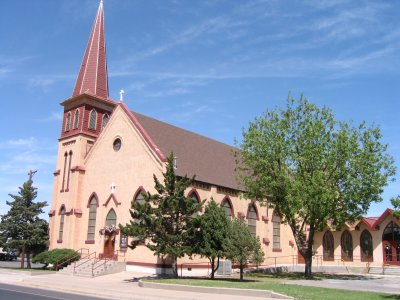
Also in 1903, St. Peter’s apostolic work in Roswell expanded to include Chaves, Eddy, Curry and Roosevelt counties, spanning 20,000 square miles. That also included Catholic cadets attending the New Mexico Military Institute.
L.K. McGaffey, who owned considerable land on the South Hill, donated the lot on the southeast corner of Main and Deming streets for the location of St. Peter’s and the church building began with a basement in 1904. Construction of St. Peter Church was completed in 1917. The architecture is a modified basilica-styled church with a central nave. Stained glass windows were added to the church in 1928 to commemorate its silver jubilee.
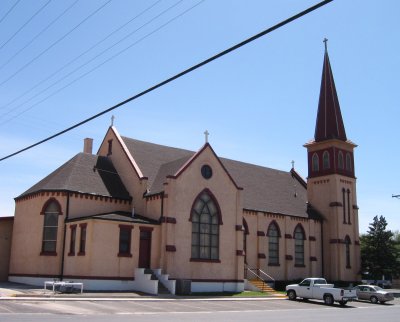
Also established in 1903 and now celebrating its 100-year anniversary is Trinity Methodist Church.
Three years earlier, in 1900, five Roswell protestant churches – First United Methodist Church, First Baptist Church, First Presbyterian Church, St. Andrews Episcopal Church, First Christian Church – and a Jewish synagogue, Congregation B’nai Israel, were founded. They held their 100th anniversary in 2000.
* Maintains joint mobility;
* Supports cartilage growth;
* Promotes joint lubrication; and
* Encourages production of synovial fluid.
BioChoice FLEX contains the highest quality of glucosamine on the market. Glucosamine is a naturally occurring substance in the body that plays a significant role in cartilage formation and repair. Shellfish is the source of glucosamine in BioChoice FLEX.
Email jan@themail.us or call 505-623-0640 to order yours today.
 Roswell Web Magazine
Roswell Web Magazine